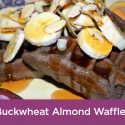Understanding food labels
Food labels are supposed to give consumers an accurate picture of the nutritional content in the foods they buy and eat. But that may not always be the case. According to the U.S. Food and Drug Administration (FDA)’s latest Health and Diet Survey, 41 percent of Americans believe most claims on their food packaging. Fifty-four percent of all consumers read a product’s label before buying it for the first time.
Unfortunately, many food labels can be misleading. Based on the label, you might see a product as a better choice than it is. In recent years, the FDA has focused on false claims manufacturers use to make their food more seem healthier or more appealing. The more you know what to look for, the easier it is to make healthy choices for yourself and your family!
So, how do you spot “too good to be true” food packaging? Here are a few examples we found on a recent trip to the grocery store:
- Made with real fruit – Many products claim that they are made with real fruit when, in fact, they are made with only a small portion of fruit —and a large portion of fruit concentrate. A picture of fruit on the box or label does not mean it’s actually healthy. When you check the ingredients, look for the fruit to be the first ingredient listed — with minimal artificial ones behind it.
- Zero grams of trans fats – You’ll see this phrase a lot on packaging these days. There has been a push to eliminate them because of their harmful effects. The food label can say “0 grams of trans fat” if one serving has less than .5 grams. Many people eat multiple servings, so you may unknowingly be ingesting one or more grams of trans fat. Check the ingredients list for “partially hydrogenated oil.” If it’s listed, the food most likely contains a measurable amount of trans fat. It’s better to avoid these foods.
- All-natural – According to the FDA, a product cannot contain synthetic or artificial ingredients and be called “natural.” The loophole here is that this category does not include pesticides or other heavily processed ingredients. The safe bet is to check all ingredients on the label to ensure the product is not hiding other ingredients.
- Made with whole grains – Many manufacturers are using this trick to get consumers to think that their product is healthy. The FDA does not define what percentage of the product must be made with whole grains; you may actually be getting refined flour instead. The best way to tell is to look for “whole grain” or “whole-wheat flour” as the primary ingredient.
- Low-fat – A product can be low in fat and high in sugar, sodium, and calories. Check for these when you read the food label. Also know that if a product is listed as fat-free, it can have up to .5 grams of fat. If you eat multiple servings, the fat can really add up.
- Gluten-free – If you have celiac disease, you definitely need to check labels to make sure you are avoiding gluten. If you do not, it’s not necessarily healthier for you to consume gluten-free products. When a product does not have gluten, it may be packed with other ingredients to make up for it — such as sugar or refined starches. These products can be less healthy than the original gluten-containing product.
Have you seen any tricky food labels lately? Share your examples to inform others!




